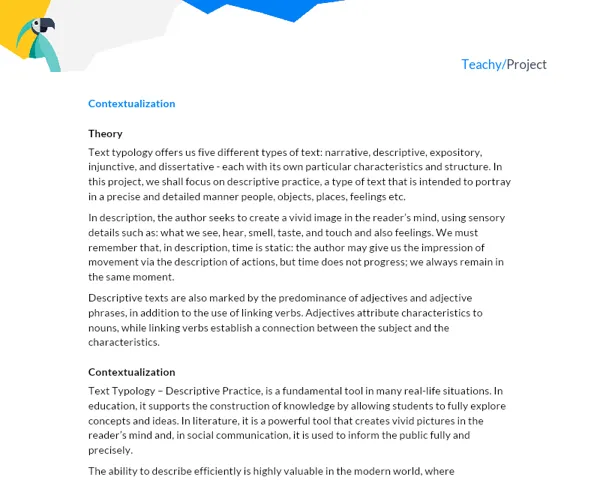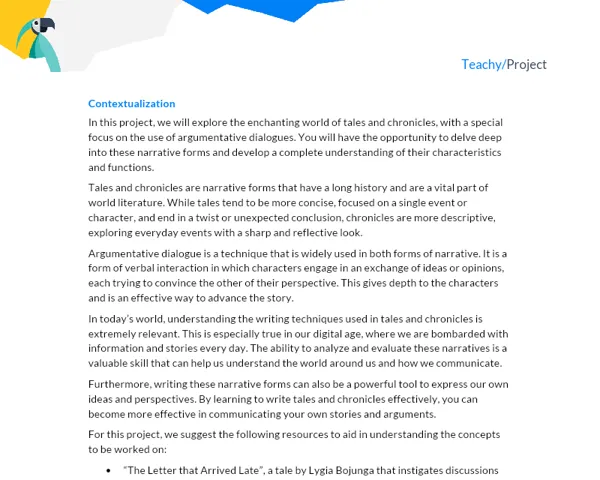Contextualization
Hello, dear students! Today we will embark on a fascinating adventure through the universe of words and their meanings. Have you ever wondered how dictionaries are made? Or what does 'context' mean when we talk about words? Get ready, because we are going to discover together!
In the world of words, each one has its own meaning, but is also influenced by the context in which it is used. This means that the same word can have different meanings depending on how it is used in a sentence or situation. For example, the word 'ball'. It can mean the round object we use to play soccer, but it can also be used to describe a lively party, as in 'the party was a blast!'.
Introduction
The dictionary is a fundamental tool for understanding the meaning of words. It is like a map that guides us in the vast territory of the Portuguese language. But to use it well, it is necessary to understand how words relate to the context. And that's where the concept of 'words in context' comes in.
When we use a word, we do not use it in isolation, but together with other words. These surrounding words, called context, help us understand the meaning of the word we are using. For example, if I say 'Let's go to the park to play ball', the context of the word 'ball' is the park and the action of playing. This helps us understand that 'ball' in this case refers to the round object used for playing.
The ability to understand words in context is essential for effective communication. The better we understand the context, the more precisely we can choose the right words to express our ideas. And that's why studying words in context is so important.
Now, get ready for a journey of discovery and fun! In our project, we will explore the world of words and their contexts in a creative and interactive way. Let's do this!
Practical Activity
Activity Title: 'Discovering Words in Context'
Project Objective
Learn to use the dictionary effectively, understanding the concept of 'words in context' and how they are used in different situations. Additionally, develop skills such as teamwork, time management, communication, creativity, and critical thinking.
Detailed Project Description
In this project, each group will be responsible for choosing, researching, and creating sentences with selected words from a dictionary. The challenge is to understand the meaning of these words and use them in different contexts, creating sentences that illustrate these contexts.
Required Materials
- Dictionaries (physical or digital)
- A4 paper or notebook paper
- Colored pencils, pens, and/or markers
- Glue and scissors (if using magazine cutouts, for example)
- Cardboard or cardstock (optional)
Step-by-Step Guide for the Activity
-
Group Formation: Divide into groups of 3 to 5 students.
-
Word Selection: With the help of the dictionary, each group should choose 10 words they do not know or find interesting. Write down the words on a piece of paper.
-
Word Research: Now, for each chosen word, research its meaning and try to find examples of how it is used in different contexts. Write down this information next to each word.
-
Sentence Creation: With the words and their meanings noted, it's time to create the sentences! For each word, the group should create at least 3 sentences using it in different contexts. Remember that the context is what gives meaning to the word!
-
Illustration of Sentences: After creating the sentences, each group should illustrate them. You can draw a scene that represents the context of the sentence or create collages with magazine cutouts. Be creative!
-
Presentation of the Work: Finally, each group should present their work to the class. Show the chosen words, read the created sentences, and explain the context of each one. Finally, display the illustrations made.
-
Project Evaluation: At the end of the presentations, we will evaluate the project as a whole. We will discuss the difficulties encountered, what was learned, what can be improved, and what were the most enjoyable parts of the project.
Delivery Format
Each group must submit the paper with the words, their meanings, and the created sentences, along with the illustrations. You can also choose to put together a small book with all this information. The important thing is that the work is organized, legible, and reflects the effort and creativity of all group members.
Remember, the goal of the project is to learn while having fun, so enjoy the process and let creativity flow! I am excited to see the results of your work!



